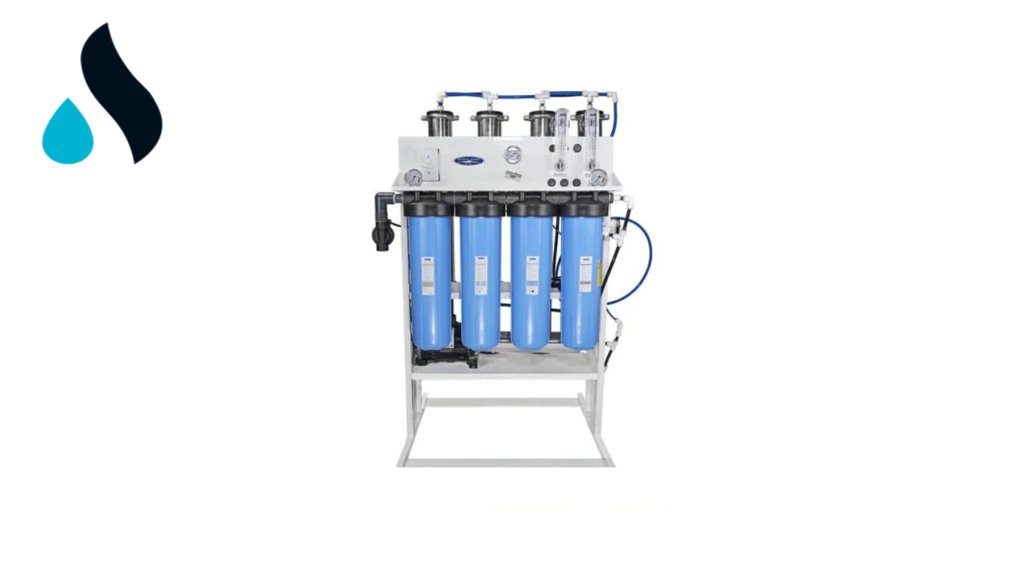Your Cart is Empty
CYBER MONDAY SALE ENDS THIS WEEK I 20% OFF STOREWIDE
Menu

Have a question? Call us 7 days a week!
CYBER MONDAY SALE ENDS THIS WEEK I 20% OFF STOREWIDE
What to Look for in a Whole House Reverse Osmosis Filter: Our Homeowner’s Guide (2024)
March 18, 2024 4 min read

Clean and safe drinking water is not just a necessity; it's a foundation for a healthy life. For homeowners embarking on the journey to improve their home's water quality, reverse osmosis (RO) technology presents a sophisticated solution.
This guide is crafted to walk you through the essential considerations when choosing a whole house reverse osmosis filter, ensuring you make an informed decision tailored to your household's needs.
Understanding Reverse Osmosis Technology
Reverse osmosis is a filtration process that removes contaminants from water by pushing it through a semipermeable membrane. This method is effective in reducing a wide range of impurities, including dissolved salts, bacteria, and other harmful minerals.
Your result? Pure, clean water flowing from every tap in your home, providing peace of mind and health benefits for your family.

Key Factors to Consider
There are hundreds of whole house reverse osmosis filtration systems available on the market for you to consider. There are however several critical factors that come into play. Let's break them down to ensure you know what to look for.
System Size and Water Flow Rate
The size of the RO system and its water flow rate are paramount. These should align with your household's water usage to avoid any inconvenience. A system too small could lead to a lack of sufficient water, while an excessively large system may unnecessarily elevate your water bill.
Calculate your home's water flow needs, considering the number of bathrooms, kitchen use, and any special water needs to find a balanced system.
To calculate the GPD rating for your home’s water treatment needs follow these steps:
- Determine your estimated daily water usage by adding up the gallons used for all household purposes (it may help to review recent water bills).
- Identify the peak demand by considering the maximum amount of water required at any given time. Including when guests may be visiting.
- Divide your estimated daily water usage by the system's recovery rate to calculate the required GPD rating.
- For example, if your estimated daily water usage is 300 gallons and the system has a 50% recovery rate (average for across all models), you would need a system with a GPD rating of at least 600 (300 divided by 0.50).

Filtration Stages
RO systems come with various filtration stages, typically ranging from three to six stages, each designed to remove different contaminants. While the RO membrane acts as the core filter, additional stages such as pre treatment sediment filters and carbon filters enhance the purification process and protect the membranes.
Many homeowners may also elect to install a remineralizer as a post-treatment filter option. While the RO process is extremely efficient at cleaning up your water source, this process also removes healthy minerals. Your water may also taste acidic, which is why we like to recommend the addition of an alkaline remineralizing post-filter.

Water Pressure Requirements
Effective RO filtration relies on adequate water pressure. If your home suffers from low water pressure, it might hinder the system's performance, leading to less efficient filtration and slower water flow.
In these cases, consider RO systems with built-in booster pumps to ensure optimal operation.

Efficiency and Water Waste
RO systems vary in water efficiency, typically producing some amount of waste water. Look for systems with a favorable water efficiency ratio, indicating less waste and more savings on your water bill.
Advanced models are designed to minimize waste, contributing to both environmental conservation and your pocket book.
Maintenance and Filter Replacement
Regular maintenance, including filter replacement, is vital for keeping your RO system in top condition.
Understand the maintenance schedule and costs associated with replacing filters and the RO membrane. Be aware of businesses advertising systems that are on the cheaper end of the spectrum.
These systems often require frequent filter replacement (every 3-6 months) vs more advanced system that offer more longevity (replacement every 2-3 years). Opting for a system with easy-to-replace components can save time and effort in the long run.

Installation Considerations
Deciding between professional installation and a DIY project depends on your comfort level and the complexity of the system. While some homeowners may opt for the DIY route, professional installation ensures the system is set up correctly and efficiently.
Be mindful of potential challenges, such as space constraints and plumbing compatibility, and plan accordingly. You may also want to install a bypass water line that can be used in the event of system failure.
Cost Analysis
Let’s be honest, investing in a whole house RO system involves upfront costs and these can be fairly high.
It is estimated that most homeowners will spend between $3,000 and $15,000 on installing a whole house RO system in their home. While these costs are initially high, it is essential to consider the long-term savings from your investment.
By reducing the need for bottled water and extending the lifespan of appliances with cleaner water, these systems can offer significant financial benefits over time.
Evaluate the cost-effectiveness of different models by comparing initial costs against maintenance expenses and potential savings.
Additional Features to Consider
Modern RO systems come with features that enhance functionality and convenience. Remineralization stages add essential minerals back into the water, improving taste and health benefits.
UV light purification offers an extra layer of protection against microorganisms as well. Additionally, smart technology integrations, such as leak detection and filter change alerts, provide added peace of mind and ease of maintenance.

Wrap-Up
Choosing the right whole house reverse osmosis filter is a decision that impacts your home's water quality and your family's health. By considering the factors outlined in this guide, you're well on your way to making an informed choice that meets your household's specific needs.
Remember, investing in a high-quality RO system is an investment in your home's future, offering pure, safe water from every tap.
Don't hesitate to consult with a professional to explore specific product recommendations and ensure your home benefits from the best possible water purification solution.
Did We Miss Anything?
Drop a comment below or give us a call at 800-374-2143 - we'd love to here from you!
Leave a comment
Comments will be approved before showing up.
